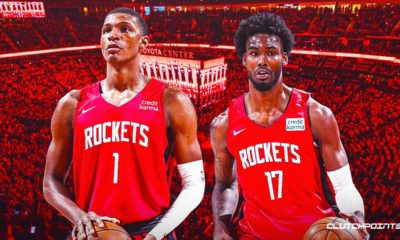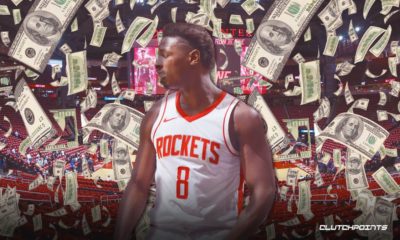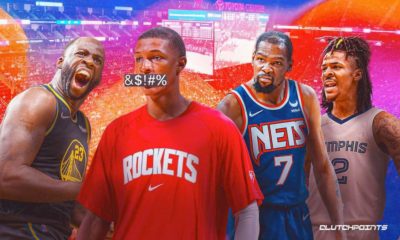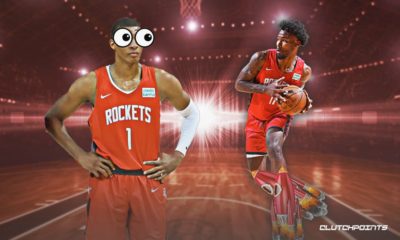Rockets
Who are the Warriors’ biggest threats in the playoffs?
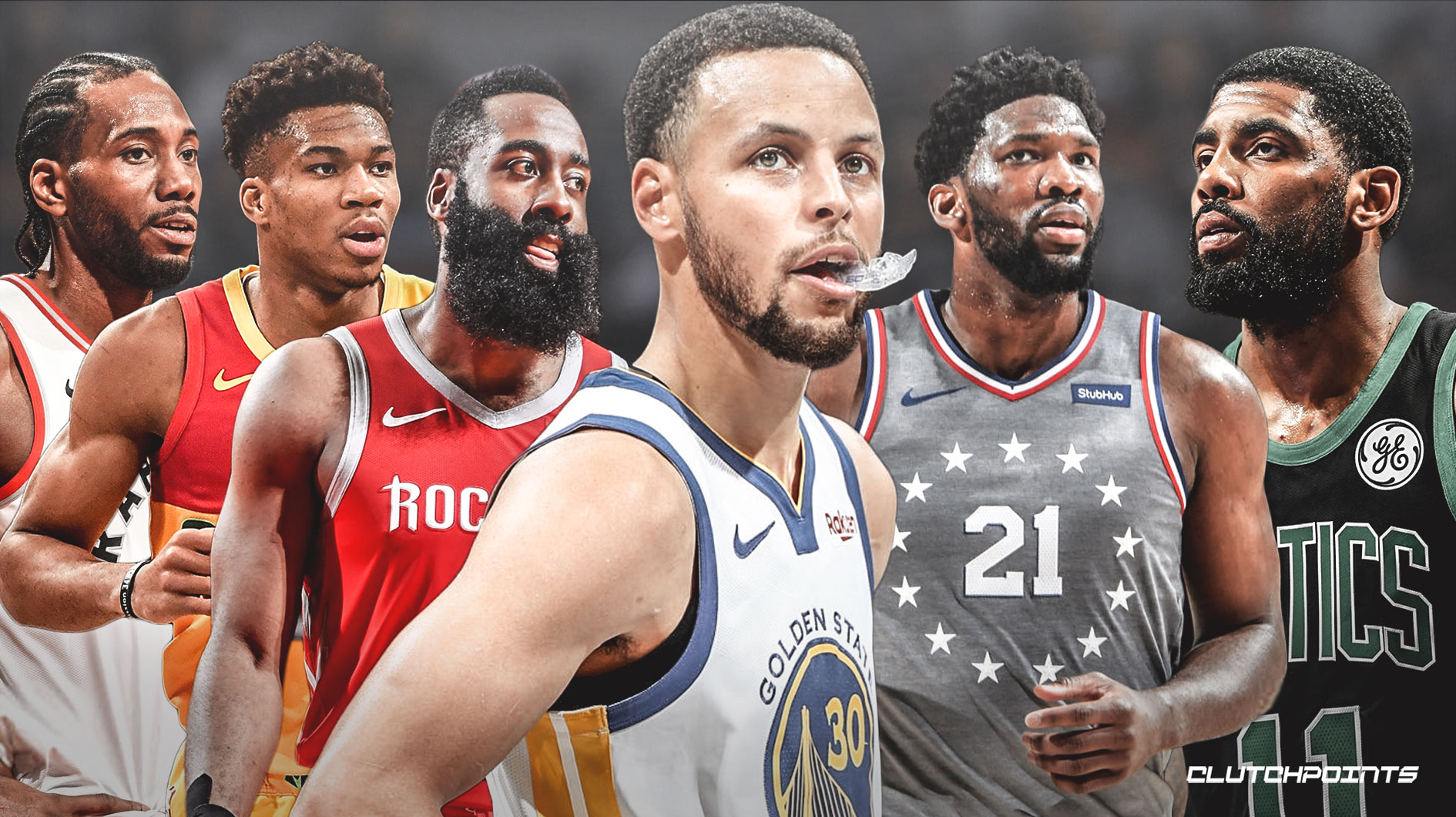
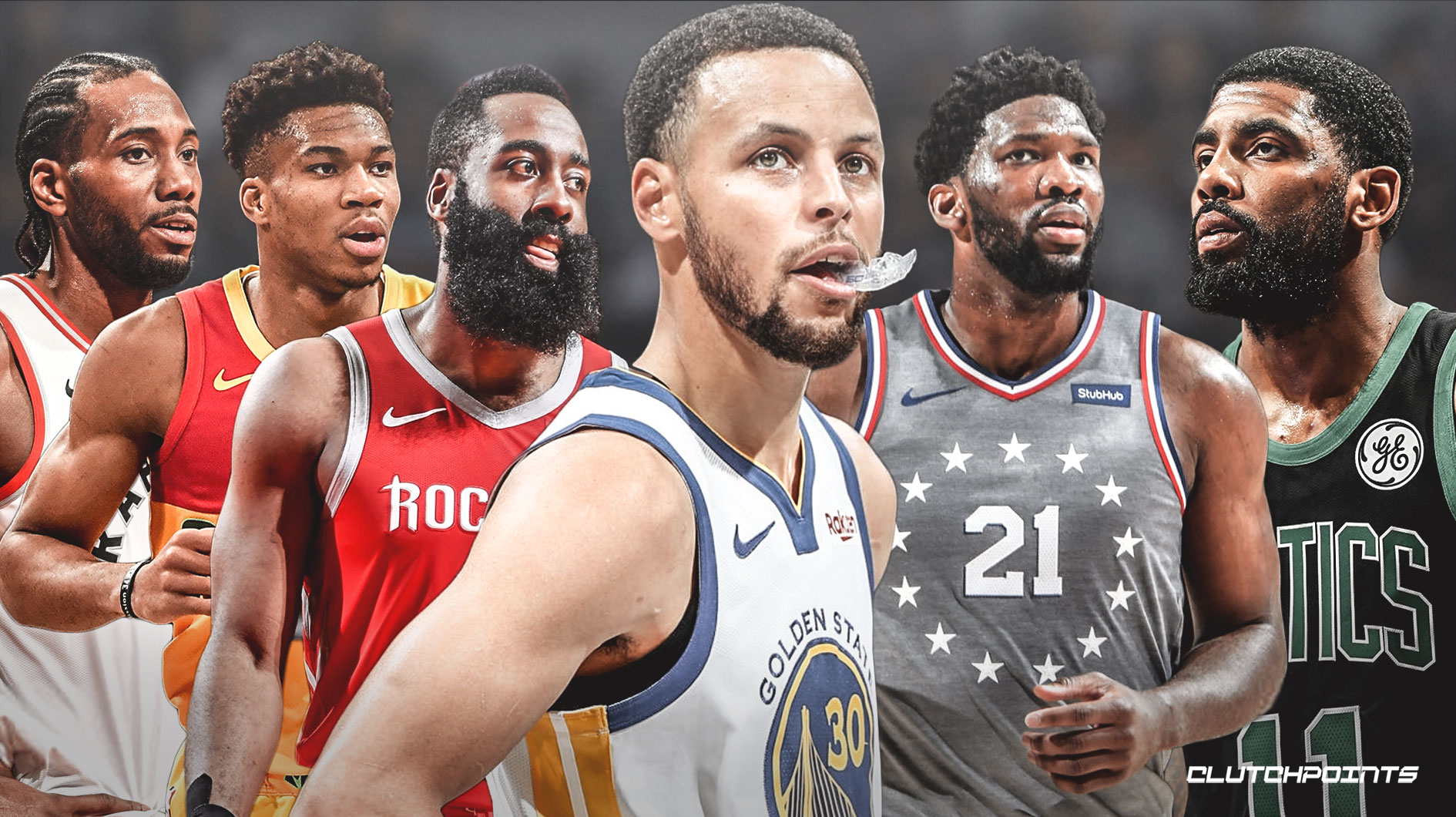
The final week of the NBA regular season is upon us, which means the playoff matchups are close to being set. For the Golden State Warriors, a three-peat is on the table. It hasn’t been accomplished since the 2002 Lakers and 1998 Bulls. As the Warriors enter the postseason as the title favorite for the fifth consecutive year, there are a handful of teams confident they can compete with them in a series.
Contrary to any season before, the majority of those challengers are in the East — where only one will have the chance to prevent another Oakland parade. All four East powerhouses grab the attention of Golden State more than the current No. 2 seed out West, the Denver Nuggets.
Those unfortunate Nuggets just can’t properly defend all of the Warriors’ actions and shooters. Now that Nikola Jokic is neutralized to some degree by the Dubs’ brand new toy at center, DeMarcus Cousins, there is little hope Denver would get a game if those teams met in late May.
So if the Nuggets aren’t a threat, Oklahoma City is probably finishing in seventh or eighth and can’t score against top-tier competition, and LeBron James is watching the playoffs from home … who can possibly make Golden State work for it?
Let’s take a look at the five most realistic threats to stopping the three-peat, ranked from weakest to strongest.
5. Philadelphia 76ers
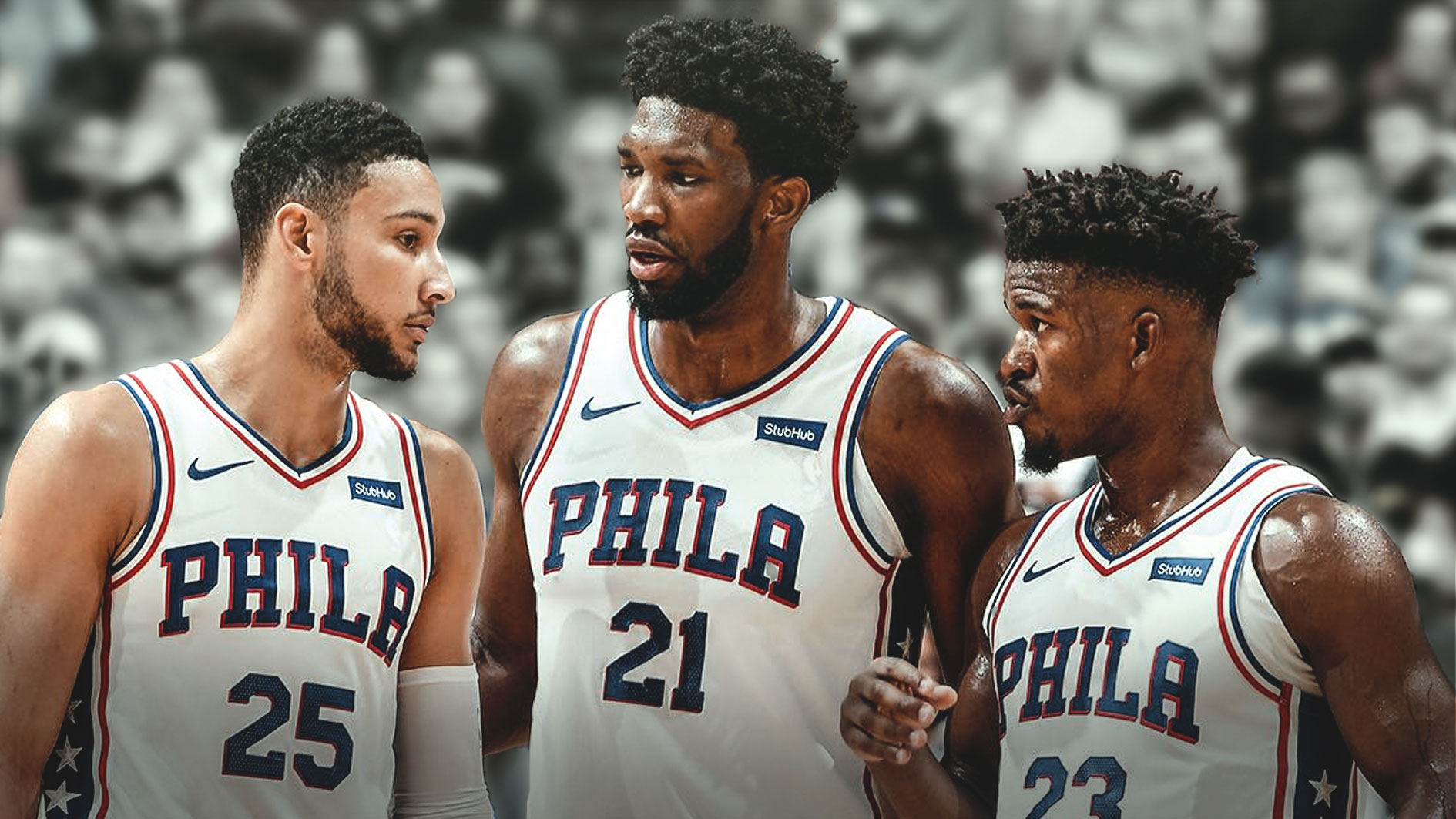
Although it would be a dream scenario for fans to see strong personalities clash if Joel Embiid visits Oracle, the Sixers pose the least dangerous threat out of the East’s “big four.”
That is not to say their chances of stealing a game would be zero — you don’t have that potent of a starting (and finishing) group and get waxed off the court. Due to injuries and rest, the revamped lineup of Ben Simmons, J.J. Redick, Jimmy Butler, Tobias Harris, and Joel Embiid has only played 10 games for a total of 160 minutes thus far. In those minutes, Philadelphia has outscored teams by 17.6 points per 100 possessions. It’s because of their elite placement on both ends, but the defense, in particular, has to please head coach Brett Brown. Harris has fit in perfectly despite being known as a defensive liability in the past, and the team thrives when Embiid is able to serve as the gatekeeper in the paint.
Everything for the Sixers in this hypothetical matchup hinges on Embiid’s ability to thrash the Dubs inside. He has drawn 250 shooting fouls in 62 games, getting to the line 14.3 times per 100 possessions and knocking down 81% of his free throws. The only other center in NBA history to match that combination was Moses Malone, another Philadelphia legend. It’s obvious that DeMarcus Cousins is taking every center matchup personal this season in his “prove it” contract year, but Embiid would be a load to stop.
For the Sixers to gain an advantage on the Warriors, they would have to exploit Golden State’s frontcourt defense. Cousins could be extremely foul prone with Embiid’s high usage in the post, and Kevon Looney just isn’t big or powerful enough to provide resistance. That opens the door for Steve Kerr to try out different options, such as Andrew Bogut at center or even Draymond Green if they want to see how Embiid fares against the small-ball style.
It’s hard to get a read on this possible scenario since Klay Thompson missed both of the meetings versus Philly this year, one of which occurred before Harris was acquired by the Sixers. Embiid missed the early March game as well. The first game was the insanely odd shooting night for Golden State as Stephen Curry shot 10-of-18 from 3 and his teammates combined to go 1-of-20 (!) without the other Splash Brother. What Thompson brings to each game with his misdirection off screens and defensive pressure — particularly against Jimmy Butler in this matchup — can’t be understated. So we don’t have much to read into from the 1-1 season split.
Playing Golden State brings out the best in Ben Simmons, however. When he visited Oracle, Simmons was by far the best defensive player on the floor and broke up numerous actions with his length and awareness. In the two games combined, he scored 51 points on 20-of-28 from the field, getting to the rim at will.
The lack of reliable depth is a red flag for Philly. Even if Brown is able to effectively stagger his main guys, they will always be against one of Durant or Curry while their best offensive force (Embiid) needs to rest. But assuming they reach the Finals, it would mean they already figured out a formula to survive against the East’s top two seeds.
4. Boston Celtics
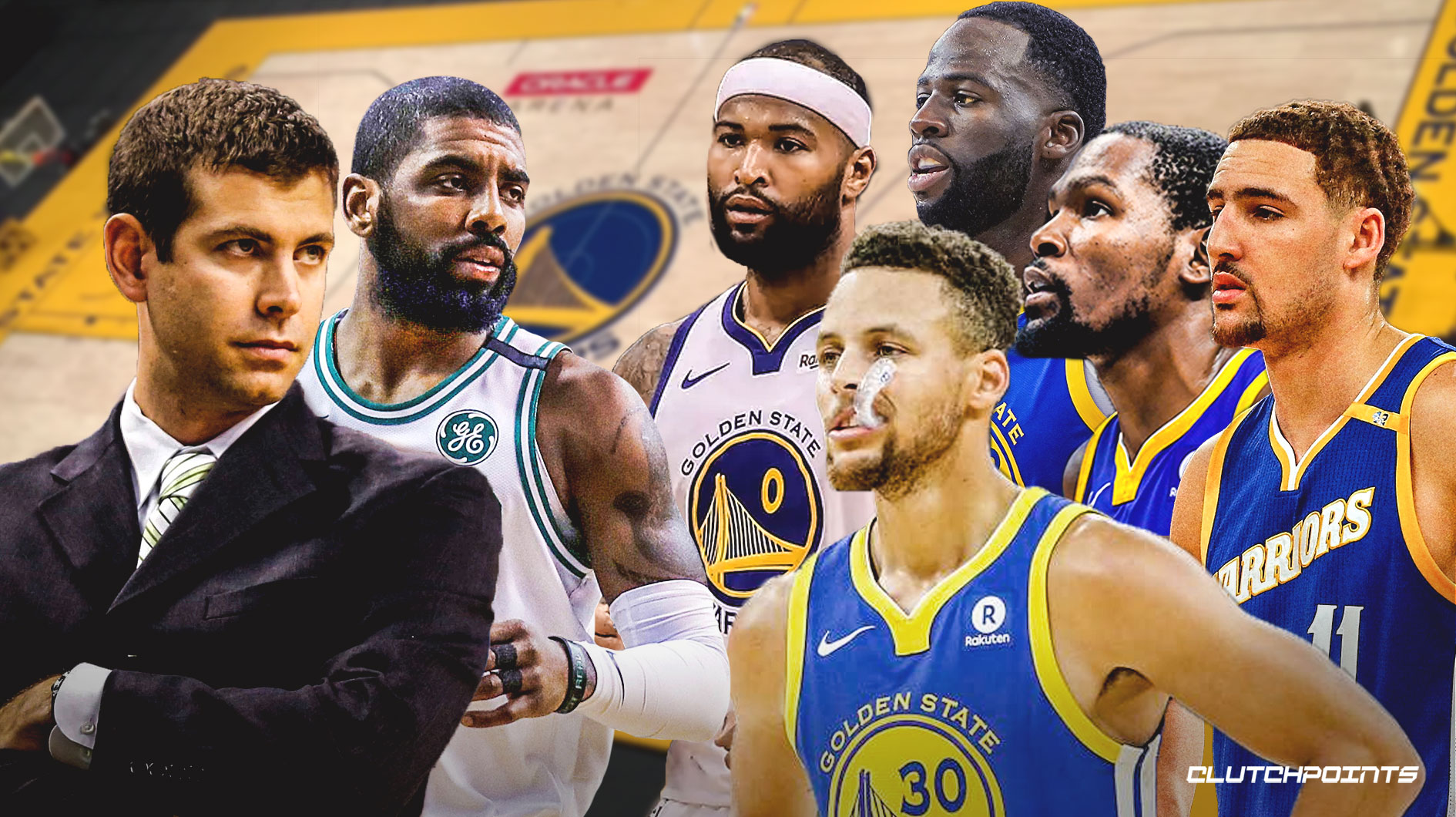
Maybe it’s foolish to give this team a better chance in a Finals showdown than Philadelphia. After all, Boston is (somehow) still fighting for home-court advantage in the first round. Even though they have severely underperformed the 59-win projection I slated for them in October, the Celtics have three important components that matter versus Golden State:
- A blend of veteran experience and youth. Teams that are too old and unable to keep up with the Warriors in transition always get torched. Teams with too much young blood are greatly outsmarted in the half court. When everyone is available and not banged up, the Celtics still have the collection of athletes and intelligence to make Golden State take more contested shots inside the arc than desired.
- A big man who serves as the glue of their team, patching things together defensively and stretching out the opposing centers beyond their comfort zone. Al Horford has always been the Tim Duncan lite, doing everything on the court that goes unnoticed. In the two games against Golden State this season, we saw glimpses of how deadly Horford could be in various roles. His screening for the Celtics’ ball-handlers at the top of the key automatically forces the Warriors’ bigs to react quickly. His knowledge of when to pick-and-pop for 3 or when to put the ball on the floor and create on the move is critical against a suspect defense. Throw in his attention to detail and incredibly low turnover rate this year (11.7%), and it’s the type of cerebral player who can outplay the Warriors’ bigs in a few games at TD Garden.
- Kyrie Irving. They just have a guy who can seemingly arrive in the Bay Area and feel zero pressure whatsoever. During clutch time this season (score within five and less than five minutes remaining), Irving has shot 56.9% from inside the arc, 33.3% from deep, and has 30 assists to only seven turnovers (4.3 ratio). That’s seven turnovers in over 120 minutes of clutch time where his usage rating is through the roof at 42.6%. Golden State isn’t scared of Irving or the Celtics by any stretch, but the defending champs would let out a quiet expletive if Boston advances to June because of his track record.
This is the first time we have seen a Brad Stevens team disappoint in the regular season compared to preseason expectations. Usually, it’s the other way around and they arrive in the playoffs as a No. 1 or 2 seed nobody is fearing. Last year, that was due to the Irving and Gordon Hayward injuries. Now they’re under the Bucks, Raptors, and Sixers, but all three would still feel uneasy in a series against them.
The overused qualifier of “Can Hayward be his Utah self?” isn’t the proper way of viewing Boston’s chances as a Finals threat. Hayward just has to fill in the gaps while Jayson Tatum tries to find the magic that made last year a special run. That includes playmaking off the pick-and-roll, as well as getting to the rim and creating easier offense than relying on jumpers.
Boston’s defensive style should have fans nervous against the Warriors, though, similar to how Milwaukee defends. The Celtics give up the second-most above-the-break 3-pointers per game (27.3% of opponents’ shots), ahead of only Milwaukee. Teams just haven’t shot well against Boston this year, as the Celtics rank fourth in opponent 3-point percentage on those non-corner attempts. If the Warriors are handed relatively open looks and Boston just wants to cut off the paint, it’s clear who will win that shootout.
Stevens and Irving will have their hands full. Just to reach the Finals, they would have to knock off a tough Indiana group, followed by the top-seeded Bucks, and then either Toronto (2) or Philadelphia (3). It isn’t looking good.
3. Houston Rockets
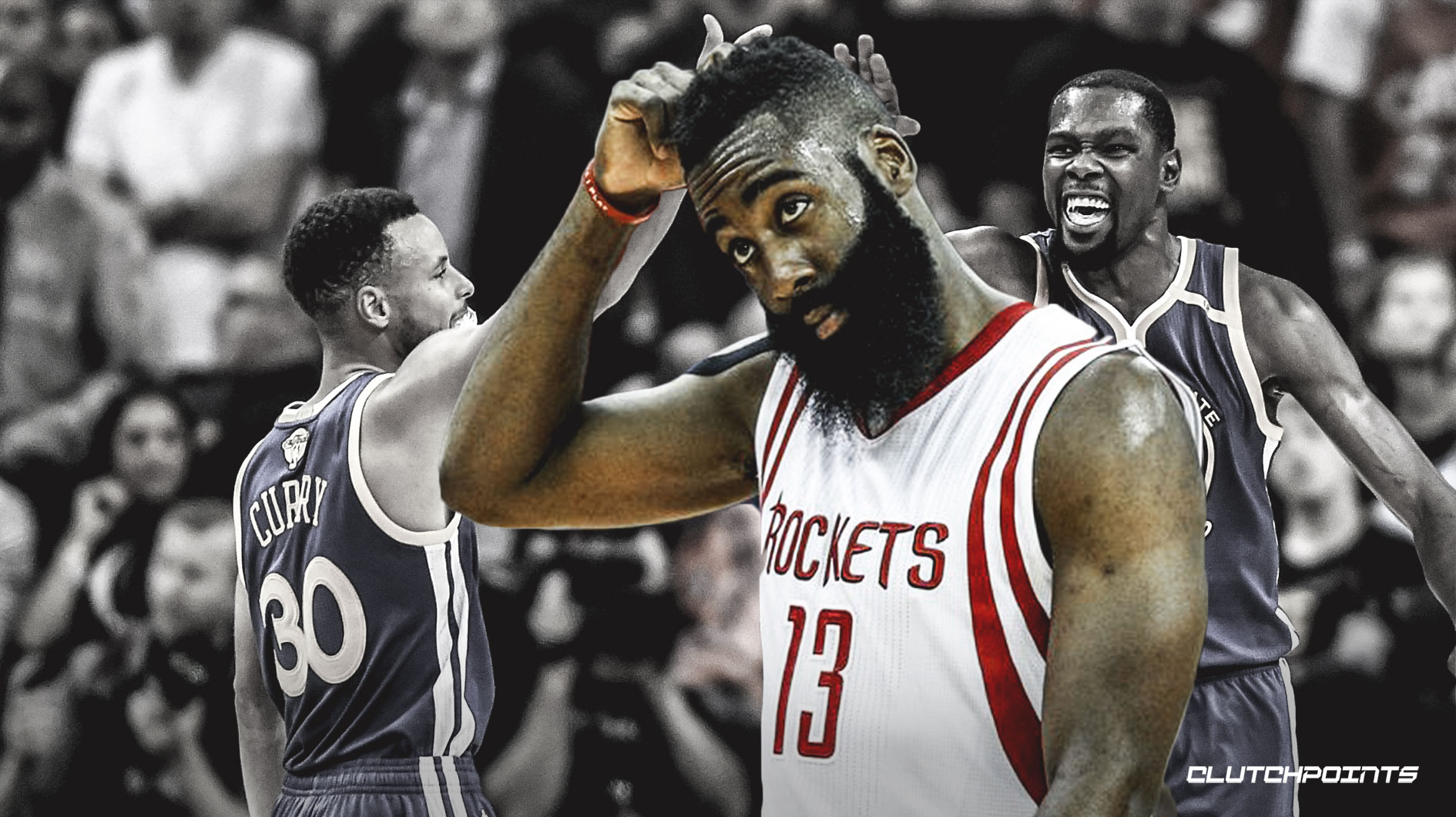
We witnessed the first movie in May 2018. It scored roughly an 80% on Rotten Tomatoes. Does the sequel project to be a major disappointment like most follow-ups? Yeah, that’s the likely outcome. But that won’t stop us from hitting the theaters!
Did the Andre Iguodala injury in Game 3 last year compromise the Warriors’ defense on switches? You bet. But even without Chris Paul in Game 7, the Rockets were a few corner treys away from advancing to the Finals. It was right there. Leading by 11 at the half, they could taste it.
This has turned into a bizarre season for Houston. From Oct. 17 to Dec. 8, they were 11-14 while ranking seventh in offensive rating (good, but not Mike D’Antoni-level elite) and 26th in defensive rating (a lost cause). Then, James Harden decided to reject the laws of fatigue and high-usage wear and tear, making it known the national spotlight was going to belong to him for the rest of the year. Along the way, the injured Rockets eventually healed and Daryl Morey made roster additions to help on the margins.
Since Dec. 8, they are 40-14 (a 61-win pace), ranking first in offensive rating over Golden State and 14th defensively. To somehow leap into a war for the No. 2 seed while managing to beat the Warriors three times along the journey is outrageous. There should be no question about it: If the meter of “most dangerous opponent” is something Golden State discusses, on a scale of 1-10, the Rockets are the only West team over three. Nobody else in the conference gives them a level of nervousness.
Harden is having the type of season you tell your kids about decades later. He went from taking 20 shots per game last year to nearly 25 now, all while staying consistent with his efficiency. He’s launching over 13 triples a night and still hovering above a league-average success rate.
What drives the Warriors’ defense nuts?
The way Houston, specifically Harden, plays in isolation. For them, it’s frustrating when Harden searches out matchups and calls for screens until he gets the ideal one. It burns the shot clock, slows the game down, and usually ends up with Curry or a Warriors big man (Looney, Cousins, Bogut) left on an island with the deadliest one-on-one player of this era. The Rockets run 22.5 isolations per game, which is 12 more than the second-highest amount (OKC). Even if it’s the most predictable offensive method in the league, it works more often than not. They also rank first in points per possession, giving them the best combination possible with volume and efficiency.
They are attacking via isolations seven more times per game than last season’s Rockets, which is incredible. So, the best method for Golden State to respond with would be the utilization of the Death Lineup. It gives the Warriors an extra perimeter defender available for switches, so instead of Cousins and Curry being targeted every trip, that is limited to one. Iguodala doesn’t shut down Harden, but he certainly lowers the per-possession damage when on the floor defensively.
The only problem with that is simple: In their last meeting, Cousins illustrated the need for his services against Clint Capela. Sure, Cousins might be slower than normal and having him guard pick-and-rolls at the top of the key would compromise the team defense because of weak-side rotations to the rim. But Cousins has a better chance of eliminating the huge rebound discrepancy the Warriors found themselves dealing with during critical moments of the West Finals last year. Capela and P.J. Tucker just fought their way to extra possessions. Cousins will be needed for more minutes than some people believe, but may not be the best closing option in crunch time.
Houston did win the season series 3-1 this year. Two of those games were after Cousins’ debut. The Warriors’ win didn’t include Kevin Durant.
When you factor in the Warriors having home-court advantage this time, the considerable drop on defense by Houston, and Durant scorching them by averaging 30 points on 49-40-88 shooting splits in the West Finals last year, it’s difficult to imagine the Rockets putting up a better fight this time around. They were nearly down 3-1 last May until Harden and Paul stormed back in Game 4 and narrowly won, which seems to be forgotten.
There really is no question who the second-best team in the West is right now. It’s not Denver, who can’t guard the Rockets or Warriors for one half, let alone a whole series. Houston has progressed back to the mean since December, but that still has them as massive underdogs if they meet the champs again. It would be surprising if that series stretched beyond five games this time.
2. Milwaukee Bucks
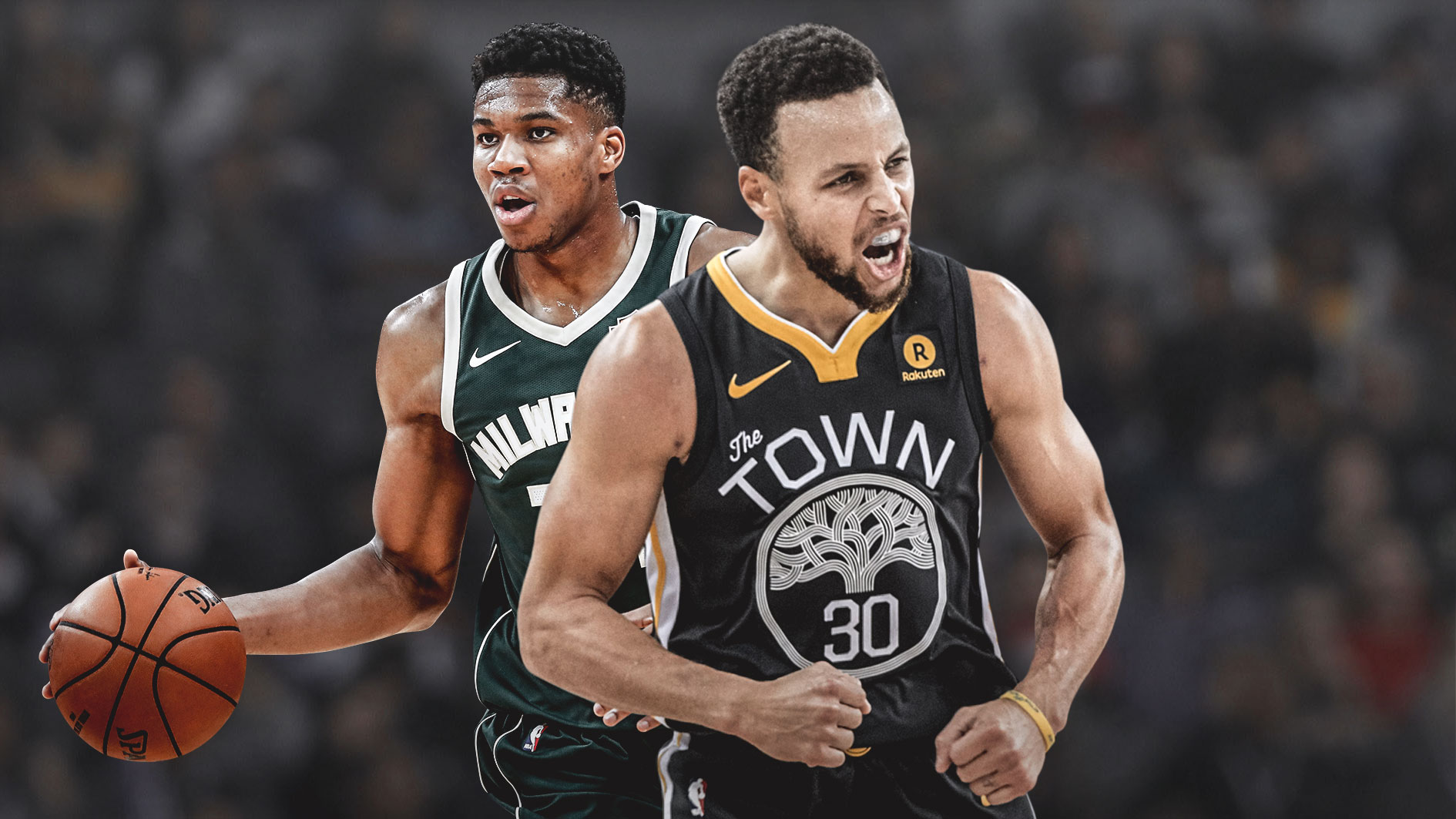
This is where things get dicey. Historically, a team with the best record in the league and 60-plus wins should unequivocally be the top challenger to a defending champion. We watched it materialize last year with Houston leaping from 55 wins to 65, securing a seven-game cushion on the Warriors, and rolling into the playoffs with the highest net rating in either conference. Those Rockets proved to be the strongest test for the Durant iteration of Golden State, but they eventually got fatigued and lost in Game 7.
Enter the Bucks, led by this year’s MVP favorite, Giannis Antetokounmpo. They fit a similar profile in terms of regular-season dominance — on their way to 60 wins and currently sitting 15th all-time in point differential (plus-9.3). Not only is Milwaukee second in true shooting percentage behind the Warriors, exceeding every offensive benchmark Mike Budenholzer had in mind when he took the head coaching job, but they are the second-greatest defensive obstacle in Golden State’s path during Steve Kerr’s tenure. The only team that exceeds the Bucks’ defensive stature would’ve been the 2016-17 Spurs that held opponents to 102.8 points per 100 possessions and was spearheaded by Kawhi Leonard and Gregg Popovich.
We only got to see the Warriors square off with those Spurs for one game before Leonard was injured. If the Bucks reach the Finals, this matchup certainly brings a similar tone. Antetokounmpo will likely have to muscle them through a gritty Heat or Magic defense in the first round, followed by the winner of Boston vs. Indiana, and then either the Raptors or Sixers in the East Finals — the road won’t be easy, especially for a group of players who haven’t played beyond the first round.
The Bucks’ framework includes nearly everything you need to attack Golden State. Their leader is a Greek wrecking ball who attempts 12.5 “drives” to the rim per game, scoring on 63% of his field goal tries while doing so. Out of all players with at least 10 drives per game this season, Antetokounmpo laps the field in efficiency. Second place? It’s only his teammate, Eric Bledsoe, shooting over 57% on drives. When Bledsoe has reached inside of four feet, he has converted on 72.4% of his shots at the rim (a career-high mark).
In this possible matchup, Bledsoe is arguably the most significant player. Outside of Jrue Holiday, he has a case for the “best defensive point guard” label given his season-long success. If there’s going to be anyone to make Stephen Curry work, feel the physical impact of every bump through his off-ball cuts, and crowd his space while fighting over screens, it’ll be Bledsoe.
The matchups across the board are fantastic, and both coaches have different tricks to combat certain lineup changes. Brook Lopez has stifled opposing slashers and bigs in the paint, but how would he fare against the Warriors’ Hamptons Five lineup? Would Budenholzer be forced to bench him? To preserve Antetokounmpo, it would be best to have the MVP slotted on Draymond Green at center, similar to what LeBron James has done in previous years. But if Lopez is a valuable part of Milwaukee’s new identity, who does he guard in that scenario … Andre Iguodala? If DeMarcus Cousins is struggling to defend in space, which the Bucks will create plenty of, then Kerr has the deadliest small-ball lineup in the league in his back pocket.
Budenholzer has hammered down on Moreyball, as the Bucks are first among playoff teams in the proportion of shots taken at the rim, second in 3-point proportion, and 29th in mid-range frequency. It has them scoring at the highest rate in franchise history.
On the defensive end, though, is where a Bucks vs. Warriors showdown is the most intriguing. Milwaukee allows the fewest rim attempts in the league (30.3% of opponents’ shots) and the stingiest efficiency. Attacking the rim isn’t the Warriors’ favorite strategy, anyway. However, when the Dubs get there, they connect on the highest percentage.
In terms of outside scoring, the Bucks allow the most 3-point attempts in the league, particularly of the above-the-break variety. This is because of their “drop” coverage in pick-and-roll when Lopez is on the floor, in addition to protecting the corners since those are the deadliest of all 3-pointers.
Except against Golden State. In that matchup, any outside shot is making you hold your breath.
This season, the Bucks have conceded 19.5 “wide-open” 3-point attempts per game (at least six feet of space). Their opponents have hit 38% of them, which is 17th overall. Just between four and six feet of space, Milwaukee has allowed 11.8 3-point looks, on average. Only 33.5% of them have connected (15th). The formula of cutting off everything at the rim and essentially giving up a load of 3s and mid-rangers has worked up to this point. But defending Curry, Durant, and Thompson with screening action along the perimeter isn’t something East teams can acutely prepare for until they get burned once or twice.
Antetokounmpo has cemented his reputation, along with this Bucks unit, with one of the most statistically dominant regular seasons of this era. But it’s likely too tall of a task for them to push this Warriors juggernaut beyond five or six games. When Golden State locks in defensively, they enter another gear during the postseason. The Dubs will still have a way to scheme against Antetokounmpo’s one glaring deficiency (shooting), and the rest of the roster is equally unproven in the advanced stages of a playoff run.
1. Toronto Raptors
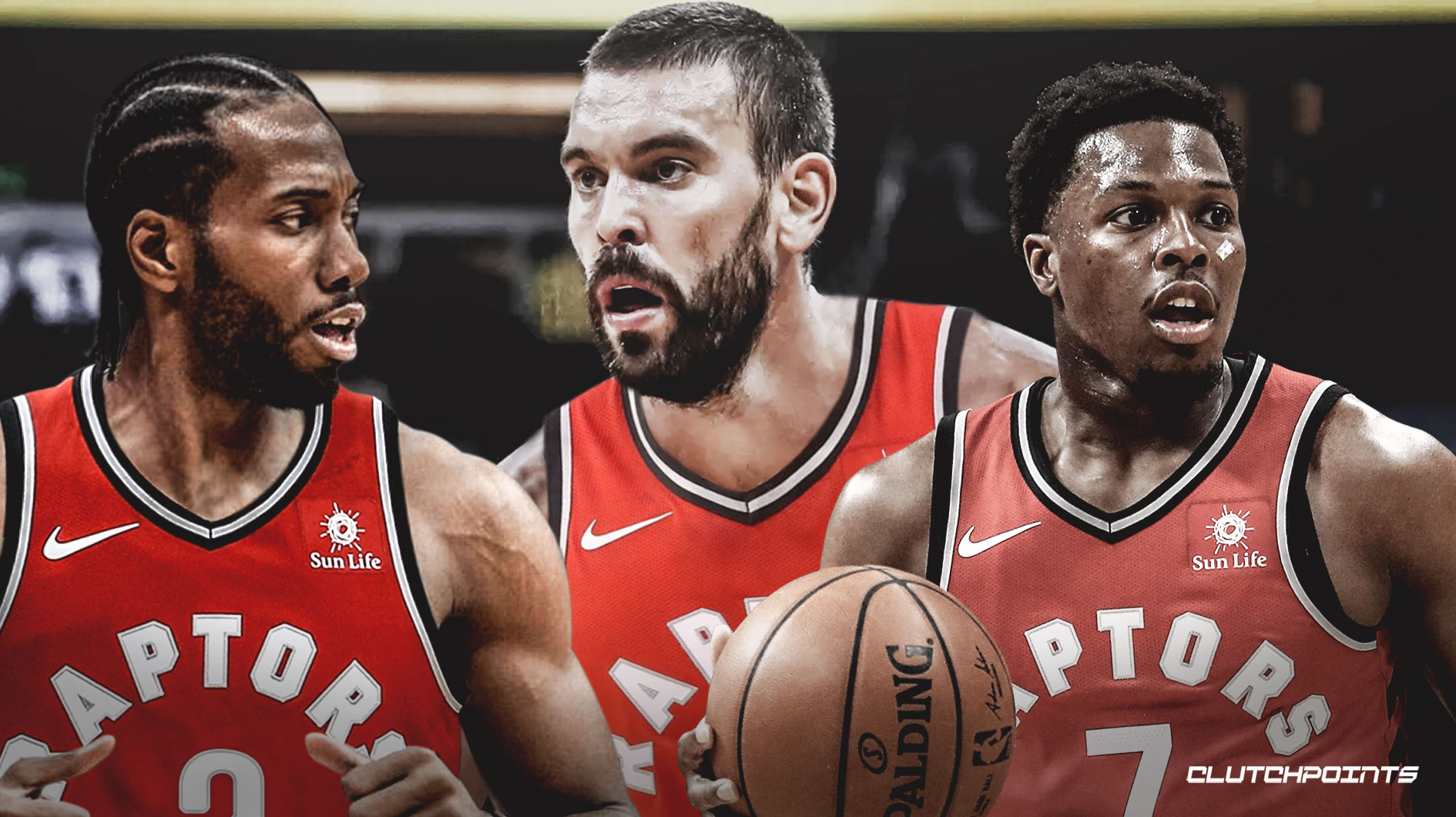
Golden State’s coaches and players would never tell you, but there’s one player who usually gets their competitive juices flowing a little faster than normal. The group Kawhi Leonard has around him now is more complete and offensively adept than the one he took to battle against the Warriors in 2017. Toronto has gone through its ups and downs this season, make no mistake about it. The Raptors don’t have the same dazzling metrics as the Bucks, who sit three games north of them in the East standings.
They aren’t too dissimilar, though.
While Milwaukee is 20-7 versus the West excluding the Suns, Toronto is 19-8. They both have the same amount of road losses, with the Bucks ranking second in road net rating and the Raptors ranking third — both behind the Warriors.
It’s true that Toronto lost the season series to the Bucks, 3-1, but it also shouldn’t be viewed as the only indicator of what’s to come. If that were the case, the Rockets should be the prohibitive favorite in the West for winning the series 3-1 over the defending champs. One of the Raptors-Bucks meetings didn’t feature Leonard or Antetokounmpo, it was played before Halloween, and Toronto shot 9-of-45 from 3 during it. You can pretty much toss that one away for being five months ago. A separate meeting included a Raptors starting five scoring 118 of the team’s 123 points, without Kyle Lowry, in a road win over Milwaukee. Wild things happen in an NBA season. None of those matchups were after the trade deadline, and that matters considering Toronto has a new starting center.
One of the differences between the two is clearly the advanced playoff experience. Leonard and Danny Green give the Raptors a dynamic they’ve never had entering the playoffs. Both have been to the Finals twice and played together in intense games against this Warriors core. This year, Green has unleashed more havoc from beyond the arc than ever before. He’s taking over five triples per game and hitting 45.2%, including 165-of-351 (47%) when he doesn’t take a dribble.
With the former San Antonio duo on the court (1,412 minutes), Toronto has posted a 118.2 offensive rating and 104.7 defensive rating, equating to plus-13.5 per 100 possessions. What should be fun about a potential Raptors-Bucks East Finals is that it places some incredibly dominant starting lineups for Toronto, by the numbers, against a player in Antetokounmpo who has thrived in various combinations with the starters and bench. The Raptors’ go-to lineups have all experienced historic offensive production, higher than Milwaukee’s, but the Bucks have tormented everyone with their consistent defense regardless who’s on the floor. They have done their damage in different ways.
There’s something still overlooked when it comes to Toronto, though. They have been able to stay within distance of the top seed, amid this phenomenal run by the Bucks, with Leonard only playing 58 games to this point. Both teams have dealt with numerous injuries, but the Raptors have rarely had a week-long stretch with all of their main guys intact. Throw in the trade deadline acquisition for Marc Gasol, and that’s another highly dependable player who hasn’t been factored into the team’s season-long performance.
Why would the Raptors have a slightly better chance at dethroning the Warriors than Milwaukee would?
With the implementation of Gasol, their offense emits a form of versatility that protects them from cold shooting nights. At least on the surface, the different lineup variations Nick Nurse can trot out, mixed with their balanced attack in the half-court setting — cuts, pick-and-roll, mid-range damage, and finishers near the rim — they are just less reliant on their superstar player than the Bucks.
Gasol is content with his role and will almost certainly be playing more than 25 minutes a night in the playoffs. Through his first 23 games, he has developed great on-court chemistry with Toronto’s cutters and has made defenders pay when they leave him open on the perimeter:
Marc Gasol’s first 23 games as a Raptor:
13.7 points, 9.6 rebounds, 5.8 assists per 36 minutes.
2PT: 61/129 (47.3%)
3PT: 20/47 (42.6%)+3.4 BPM –– higher than last year & this year in Memphis
— Shane Young (@YoungNBA) April 4, 2019
The Raptors crushed Golden State in Oracle before Christmas, which obviously didn’t include Gasol. But it also didn’t feature Leonard, who was resting. They demonstrated their late-game execution against the Warriors at home, holding off Durant in the midst of his 51-point explosion without Curry. We have yet to see a fully loaded Warriors versus Raptors matchup, but Toronto has two data points that give them extreme confidence on the offensive side. They scored 117.3 points per 100 possessions against them in those two games.
It’s not crazy to think Toronto matches up a bit better defensively with the Dubs, too. Pascal Siakam is the leading candidate for Most Improved Player mainly due to his efficiency, but what goes unnoticed is how many different positions he’s comfortable switching against. If Nurse elects to go smaller to match the Warriors’ speed, a Lowry-Green-Anunoby-Leonard-Siakam group is the ideal choice when Iguodala replaces Cousins.
The Raptors can also match the Warriors’ transition game. At least that’s what they have shown during the regular season. Toronto has started 18.3% of its possessions in transition, the fifth-most in the league. They have an offensive rating of 132.1 in those possessions, per Cleaning the Glass. It’s actually a few points higher than the Warriors and significantly more than every other team. They are blessed with terrific guard play with Lowry and Fred VanVleet, knockdown shooters who get to their spots quickly, and two centers with different skill sets, which gives them a chance against any type of big they go against.
What the NBA universe needs, though, are closing minutes between the small-ball Raptors and Hamptons Five Warriors. It might set the world on fire.
The probability of a championship banner coming to Canada this year isn’t great. If Durant didn’t exist and things could feel balanced, it may be a coin flip. These Raptors should still have a remarkable run in them. From top to bottom, they are equipped with enough scorers, lengthy defenders, and multiple styles to disrupt the dynasty.
*All stats via Cleaning the Glass and NBA.com*
The post Who are the Warriors’ biggest threats in the playoffs? appeared first on ClutchPoints.






